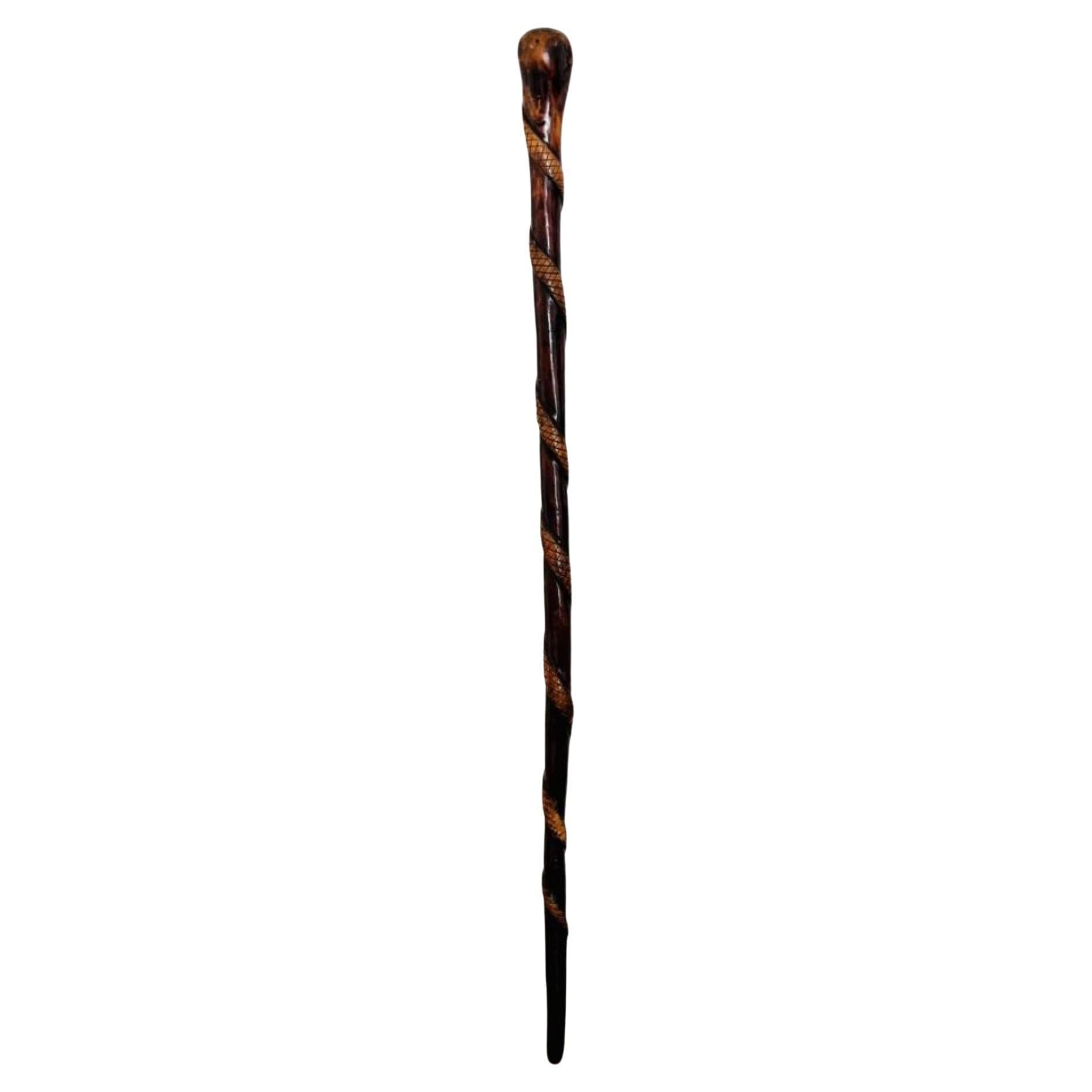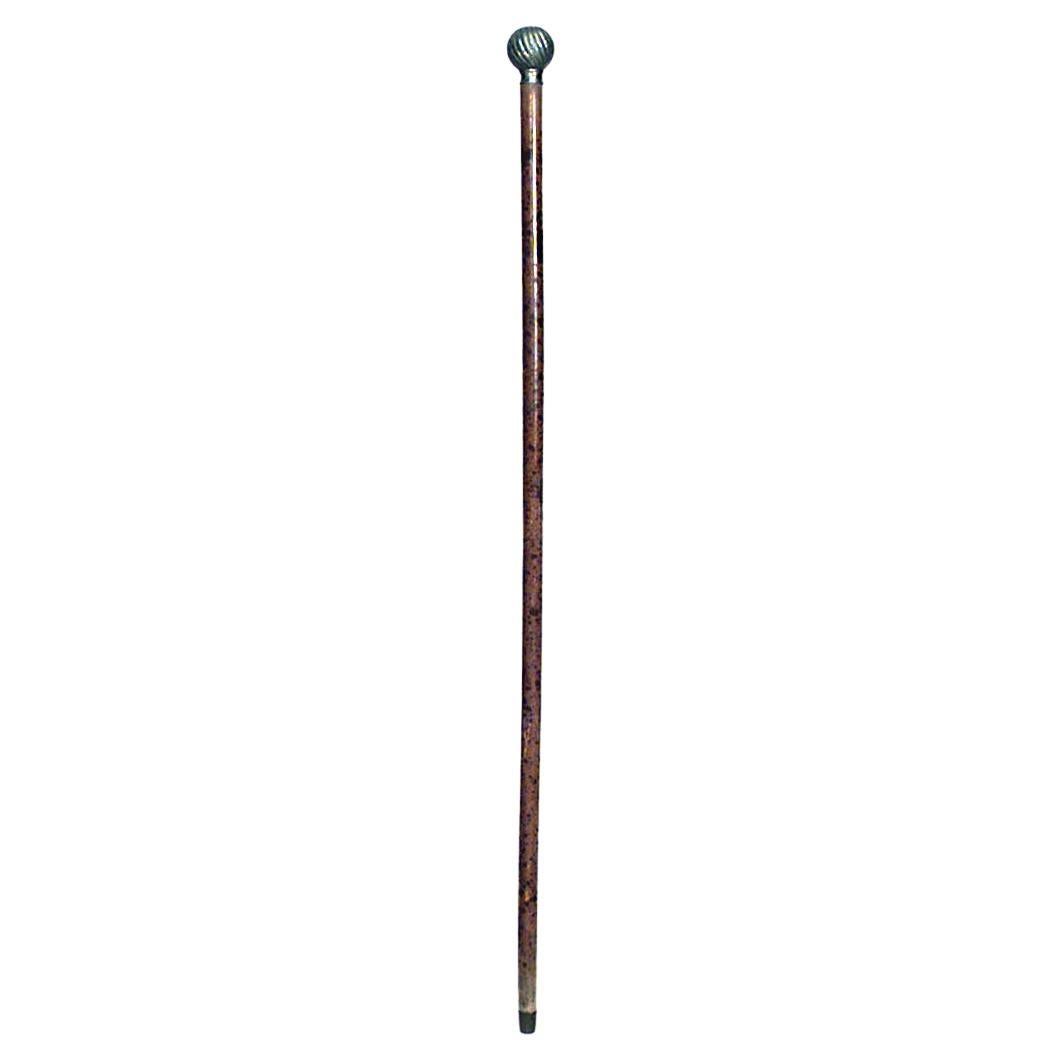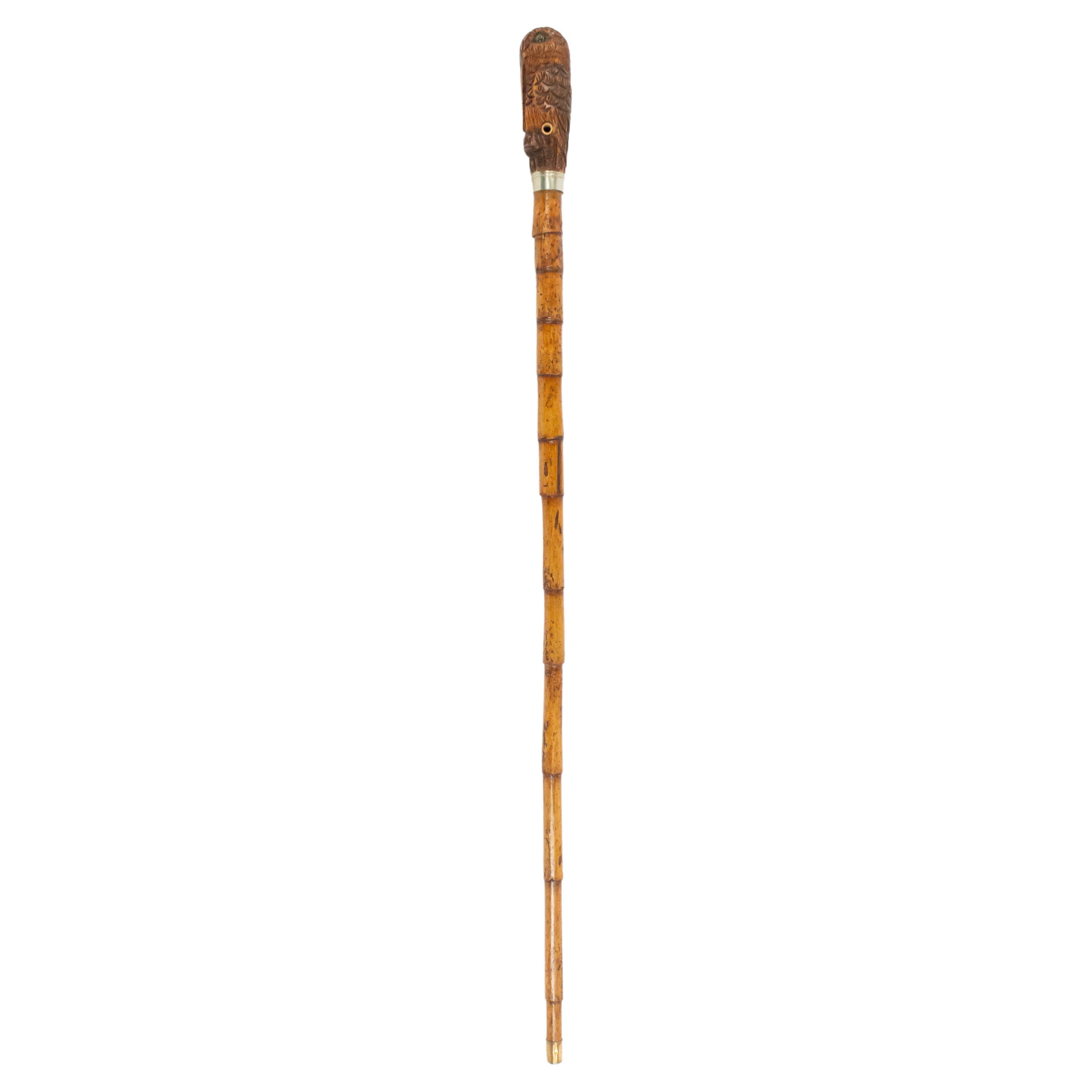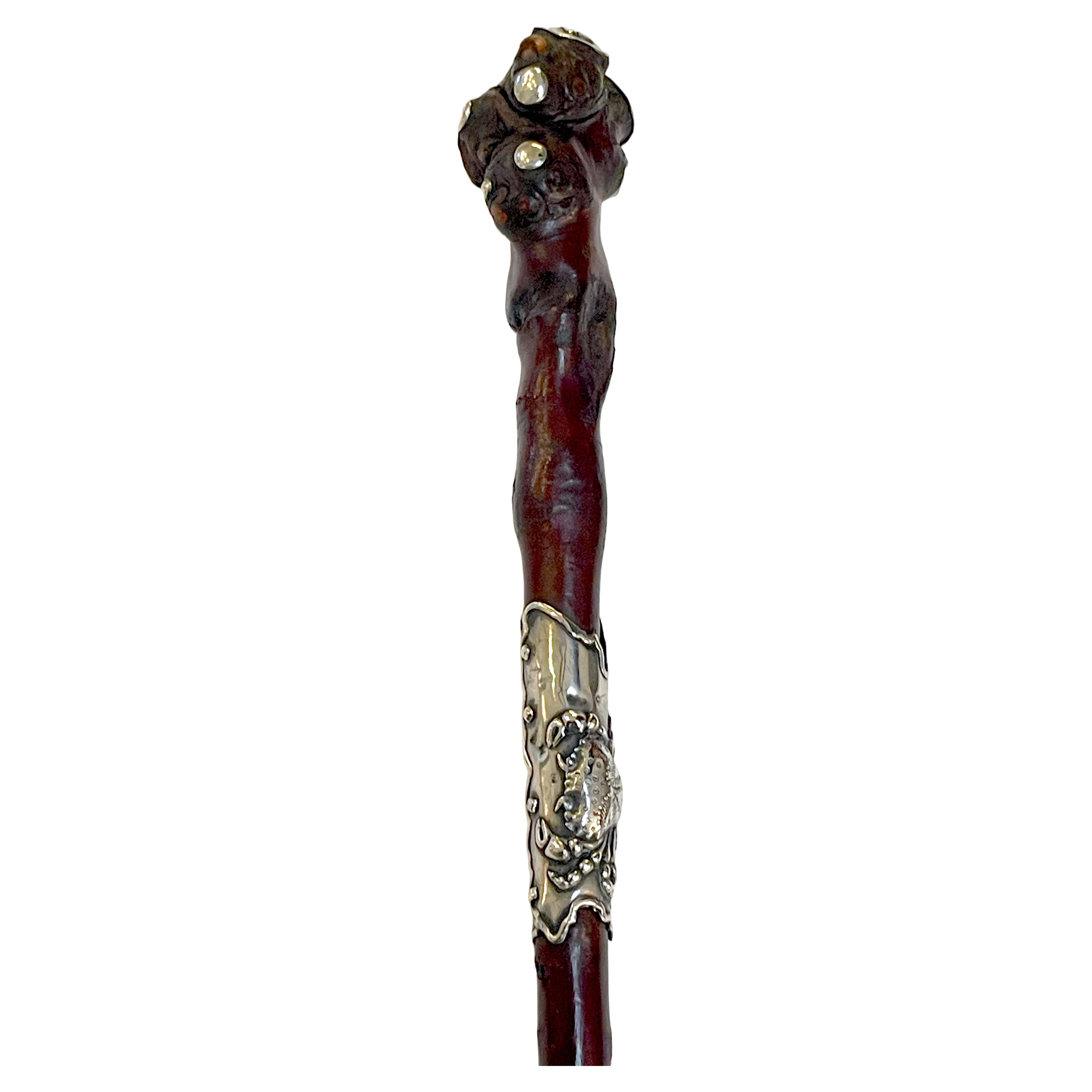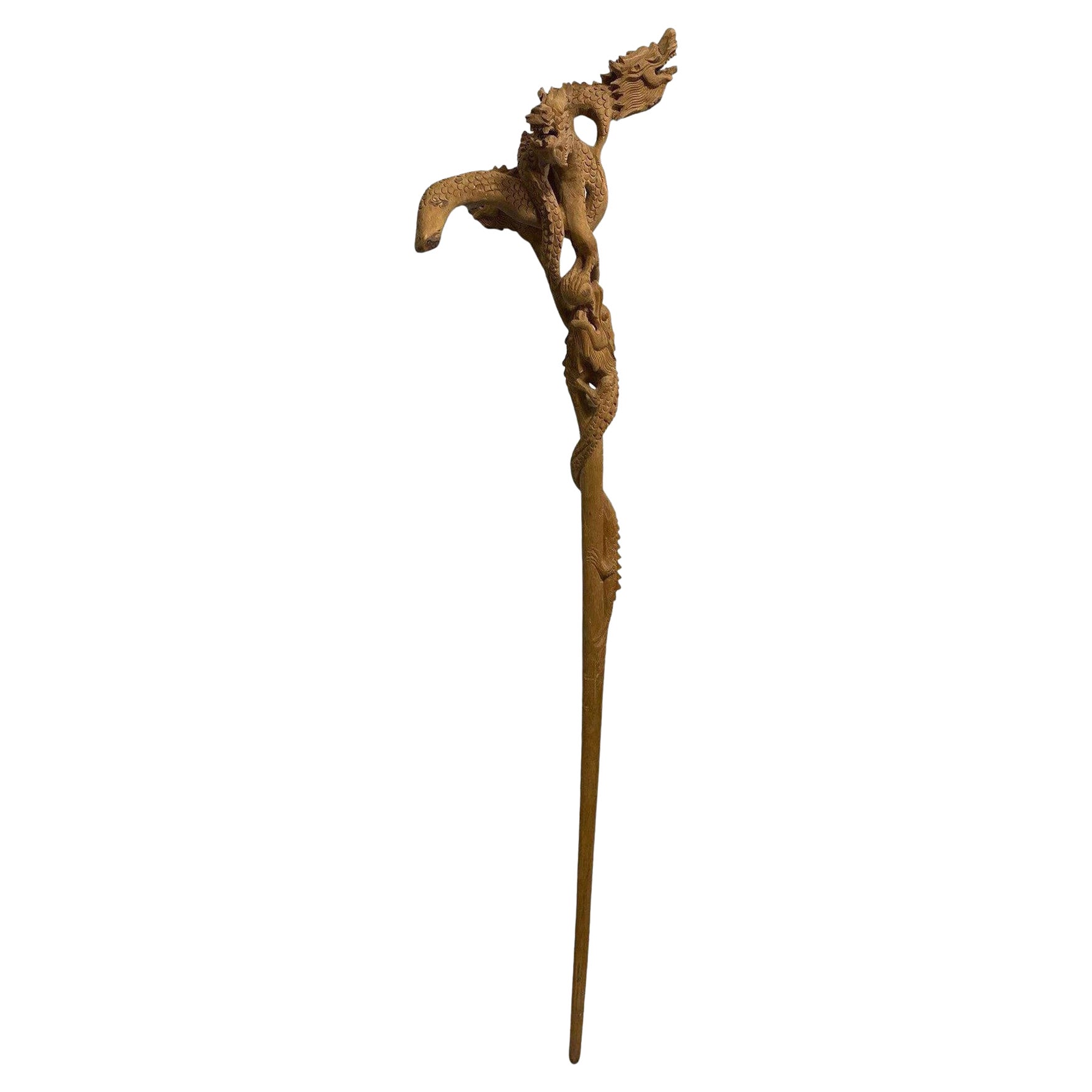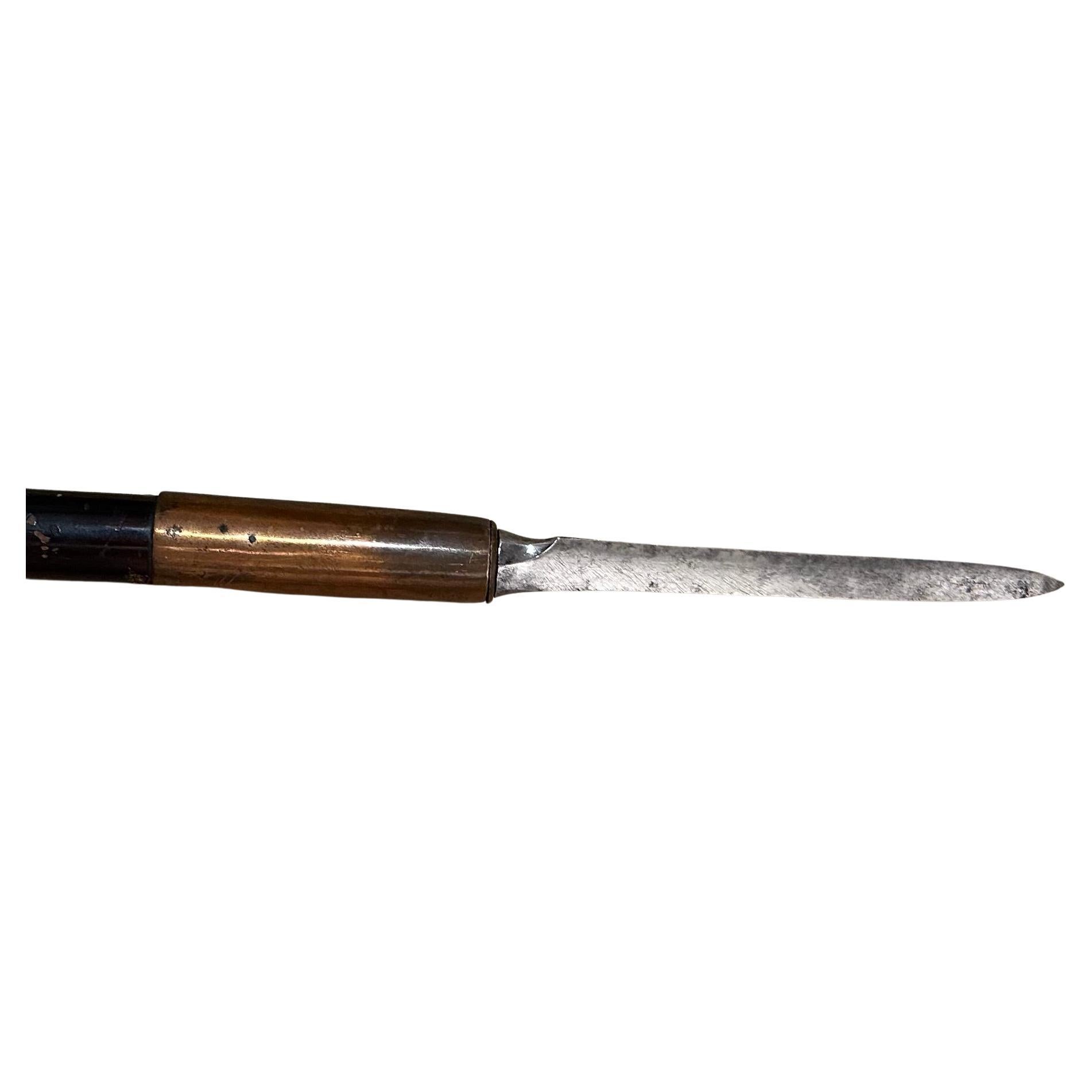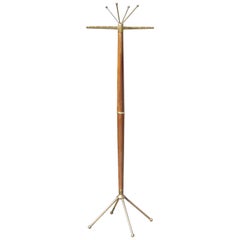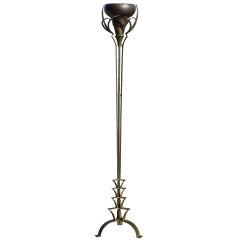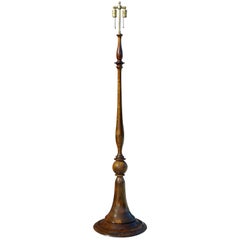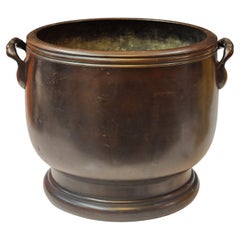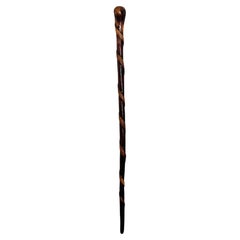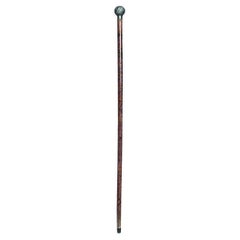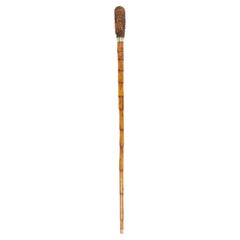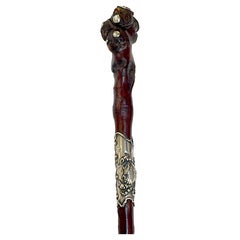Items Similar to Meiji Period Shagreen Clad Cane with Minamoto Clan Crest
Want more images or videos?
Request additional images or videos from the seller
1 of 8
Meiji Period Shagreen Clad Cane with Minamoto Clan Crest
$7,500
$12,50040% Off
£5,565.29
£9,275.4840% Off
€6,482.80
€10,804.6740% Off
CA$10,440.05
CA$17,400.0940% Off
A$11,625.94
A$19,376.5740% Off
CHF 6,050.66
CHF 10,084.4340% Off
MX$143,346.47
MX$238,910.7840% Off
NOK 77,059.79
NOK 128,432.9840% Off
SEK 72,428.73
SEK 120,714.5540% Off
DKK 48,369.74
DKK 80,616.2440% Off
Shipping
Retrieving quote...The 1stDibs Promise:
Authenticity Guarantee,
Money-Back Guarantee,
24-Hour Cancellation
About the Item
A rare and refined Meiji-period walking cane clad in spiraled ray skin (shagreen), polished and finished in traditional black lacquer. The lacquered shagreen surface reveals the underlying natural texture of the skin beneath its rich, dark sheen—a technique adapted directly from the construction of samurai sword hilts (tsuka), where ray skin was used for its strength and grip, then often sealed with black lacquer for durability and elegance. Here, the same method is applied to a Western-style walking stick, merging Japanese artisanal heritage with Meiji-era modernity.
The cane features a sterling silver cap and foot, with the shaft adorned by a finely cast sterling silver mon (crest) of the Minamoto Clan—one of the most important and powerful families in Japanese history. The emblem, a stylized Sasa Rindō (gentian and bamboo), symbolizes the clan’s noble lineage.
The Minamoto Clan rose to prominence during the late Heian period, and in 1192, Minamoto no Yoritomo became Japan’s first shogun, establishing the Kamakura shogunate. A shogun was a military dictator appointed to rule on behalf of the emperor, who remained a symbolic figure. The shogun held true political and military power, leading a warrior government (bakufu) that oversaw law, land, and military command. This shift marked the formal rise of the samurai class, and Japan would be ruled by successive shogunates for over 600 years.
The shogunate system allowed centralized military rule and social order during eras when the imperial court lacked effective control. Shoguns and their warrior class reshaped Japanese society, culture, and governance, leaving a deep imprint on national identity. The Minamoto Clan’s ascent was the beginning of this era of samurai rule, making their crest a powerful symbol of historical authority and martial heritage.
By the late 19th century, during the Meiji period, Japan was rapidly modernizing—but aristocratic families and former samurai continued to assert their identity through traditional symbols such as clan crests. A cane like this, blending European form with distinctly Japanese materials and emblems, would have been carried by a high-ranking official, noble, or samurai descendant—someone navigating a modernizing world while honoring deep ancestral roots.
An exceptional and symbolically rich object that bridges material craft, historical significance, and the enduring legacy of Japan’s warrior class.
- Dimensions:Height: 35.5 in (90.17 cm)Diameter: 1.5 in (3.81 cm)
- Style:Meiji (Of the Period)
- Materials and Techniques:
- Place of Origin:
- Period:
- Date of Manufacture:1880s
- Condition:Wear consistent with age and use. cap is at an angle, but has been that way for a long time.
- Seller Location:Kilmarnock, VA
- Reference Number:1stDibs: LU883018320192
About the Seller
4.8
Vetted Professional Seller
Every seller passes strict standards for authenticity and reliability
Established in 2004
1stDibs seller since 2009
161 sales on 1stDibs
Typical response time: <1 hour
- ShippingRetrieving quote...Shipping from: Kilmarnock, VA
- Return Policy
Authenticity Guarantee
In the unlikely event there’s an issue with an item’s authenticity, contact us within 1 year for a full refund. DetailsMoney-Back Guarantee
If your item is not as described, is damaged in transit, or does not arrive, contact us within 7 days for a full refund. Details24-Hour Cancellation
You have a 24-hour grace period in which to reconsider your purchase, with no questions asked.Vetted Professional Sellers
Our world-class sellers must adhere to strict standards for service and quality, maintaining the integrity of our listings.Price-Match Guarantee
If you find that a seller listed the same item for a lower price elsewhere, we’ll match it.Trusted Global Delivery
Our best-in-class carrier network provides specialized shipping options worldwide, including custom delivery.More From This Seller
View AllSculptural American Midcentury Coat Rack
By Gio Ponti
Located in Kilmarnock, VA
Wonderful atomic Spage Age shape to this Mid-Century Modern gem of a coat rack. The coatrack is sculptural enough it can be put in nearly any environment and still hold it's own. I'v...
Category
Vintage 1960s American Mid-Century Modern Coat Racks and Stands
Materials
Brass
Italian Liberty Style Forged Iron and Hammered Copper Torchiere
By Liberty & Co.
Located in Kilmarnock, VA
An exceptionally well-crafted Italian Liberty Style torchiere, made of hand-forged iron and hammered copper, this piece embodies a rare blend of artistry, material intelligence, and ...
Category
Vintage 1930s Unknown Art Deco Floor Lamps
Materials
Copper, Iron
Austrian Turned Walnut Floor Lamp, circa 1915
Located in Kilmarnock, VA
A substantial and sculptural turned walnut floor lamp, crafted in the Biedermeier style, with a commanding 18-inch diameter base and beautifully executed proportions. The warm, highly figured walnut is expertly lathe-turned into a sweeping architectural form that references 19th-century European classicism while remaining strikingly modern in silhouette.
Producing a turned piece of this scale—especially with such balance and clarity—would have required exceptional skill and specialized equipment, particularly during the early to mid-20th century when this lamp was likely produced. The sheer size of the base and the consistency of the turning across its full height suggest a level of craftsmanship often reserved for architectural columns or custom commissions. The result is a floor lamp that feels as much like a piece of sculpture as a functional object.
The lamp is designed in the tradition of Biedermeier, the early 19th-century Central European style known for its simplicity, symmetry, and reverence for fine materials. Though pared down in ornament, this style was favored by intellectuals, artists, and aristocrats for its quiet elegance and timeless restraint.
Originally sourced from David Duncan Antiques...
Category
Vintage 1910s Austrian Biedermeier Floor Lamps
Materials
Walnut, Lacquer
19th century Japanese Bronze Hibachi or cache pot
Located in Kilmarnock, VA
Late 19th Century Patinated Bronze Hibachi – Versatile Cache Pot or Ice Bucket
A charming late 19th-century bronze hibachi featuring a rich, aged patina that highlights its historic...
Category
Antique 1880s Japanese Metalwork
Materials
Bronze
Sculptural Bronze Art Deco Floor Lamp by The Crest Company circa 1930
By The Crest Company, Chicago
Located in Kilmarnock, VA
A striking and rare transitional floor lamp by The Crest Company of Chicago, crafted circa 1930 in a refined interplay of bronze and silvered bronze, topped with its original bronzed...
Category
Vintage 1930s American Floor Lamps
Materials
Bronze
Silvered Bronze Lamp Attributed to E.F. Caldwell
By Edward F. Caldwell & Co.
Located in Kilmarnock, VA
A striking silver-plated bronze table lamp, attributed to E.F. Caldwell & Co., one of the most important American lighting firms of the early 20th century. Dating to around 1910, thi...
Category
Vintage 1910s American Table Lamps
Materials
Bronze, Silver Plate
You May Also Like
Unusual antique Victorian quality hardwood walking stick
Located in Ipswich, GB
Unusual antique Victorian quality hardwood walking stick having an unusual quality hardwood antique Victorian walking stick with a carv...
Category
Antique Early 19th Century Victorian Sculptures and Carvings
Materials
Hardwood
English Victorian Wood and Pewter Cane
Located in Queens, NY
English Victorian-style wood cane with pewter swirl design ball top.
Some losses, top 1.5\" depth
Category
Antique Late 19th Century Victorian Sports Equipment and Memorabilia
Materials
Pewter
English Victorian Carved Bamboo Pelican Cane
Located in Queens, NY
English Victorian bamboo cane having a handle carved as stylized pelican with a silver collar and brass tip.
Category
Antique Late 19th Century British Victorian Sports Equipment and Memorab...
Materials
Silver, Brass
American Aesthetic/Japonisme Sterling Mounted Root Cane Attributed to Gorham
By Gorham CO.
Located in West Palm Beach, FL
American Aesthetic/Japonisme Sterling Mounted Root Cane Attributed to Gorham
An exquisite American Aesthetic/Japonisme Sterling Mounted Root Cane, Attributed to Gorham date lettered...
Category
Antique 19th Century American Aesthetic Movement Sterling Silver
Materials
Sterling Silver
$1,920 Sale Price
20% Off
Hand Carved Wood Multi Dragon Head Asian Chinese Walking Cane Stick
Located in Studio City, CA
A rather fantastic and unusual walking stick/ cane. Hand carved from wood. Multi dragon heads. We have not seen another quite like it.
Has a great feel and clearly unique look.
...
Category
20th Century Chinese Sculptures and Carvings
Materials
Wood
Japanese Spear, Edo Period, bears signature
Located in Stockholm, SE
A Japanese long spear. Partly lacquered wood with a forged spearhead which is signed. High quality as most of Japanese items.
Provenance: early 20th century Swedish collection.
Category
Antique 19th Century Japanese Metalwork
Materials
Iron
More Ways To Browse
Antique Crest
Japanese Iron Meiji
Iron Crest
Japanese Cane
Antique Shagreen
Meiji Samurai
Samurai Warrior
Sterling Cane
Shogun Warriors
Scholar Stone
Chinese Scholar Wood
Chinese Scholar Stones
Calligraphy Brush
Calligraphy Brushes
Scholar Rock
Chinese Scholar Rock
Antique Chinese Brush Pots
Antique Calligraphy Brushes
